1. Introduction
The 17th Monthly Report of the CIES Football Observatory analyses the evolution of sums spent on transfer fees by teams from the five major European leagues since January 2010. The results show that investments have grown almost continually year after year to reach a new record of €4.2 billion in 2016.
The Report also studies the profile of the beneficiaries of transfer fees paid out by big-5 league clubs. It reveals that the financial flows remain principally within the five major championships. During the seven year period studied, around two-thirds of the sums invested by big-5 league teams benefited other clubs that make up these competitions.
2. Evolution of transfer fees
During the last summer transfer window, big-5 league teams spent €3.7 billion on recruiting new players. By adding the fees paid in January, we reach a new record of €4.2 billion for 2016. To compare, this figure was €1.5 billion in 2010. With the exception of 2012, spending has increased each year.
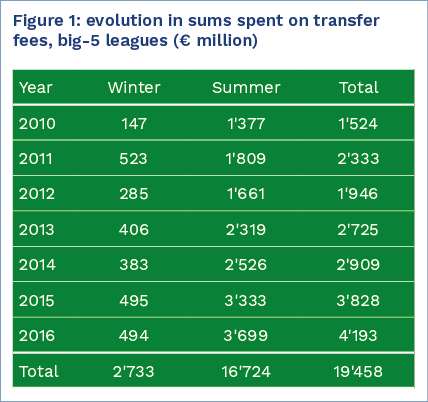
The Premier League is the competition whose clubs spend the most on new players. Investments increased from €475 million in 2010 to almost €1.8 billion in 2016. The proportion of spending by English teams with respect to the total expenditure of big-5 league clubs has strongly increased over the period taken into account: from 31.1% in 2010 to 42.3% in 2016. This demonstrates the financial ascension of the English top division.
In comparison to other leagues studied, the proportion of sums invested by the three clubs that spend the most is relatively low in England. This reflects a more equal distribution of resources within the Premier League. Over the period analysed, the three clubs having spent the greatest amount in transfer fees accounted for 41% of the total expenditure. This is the lowest percentage among the five competitions taken into account.
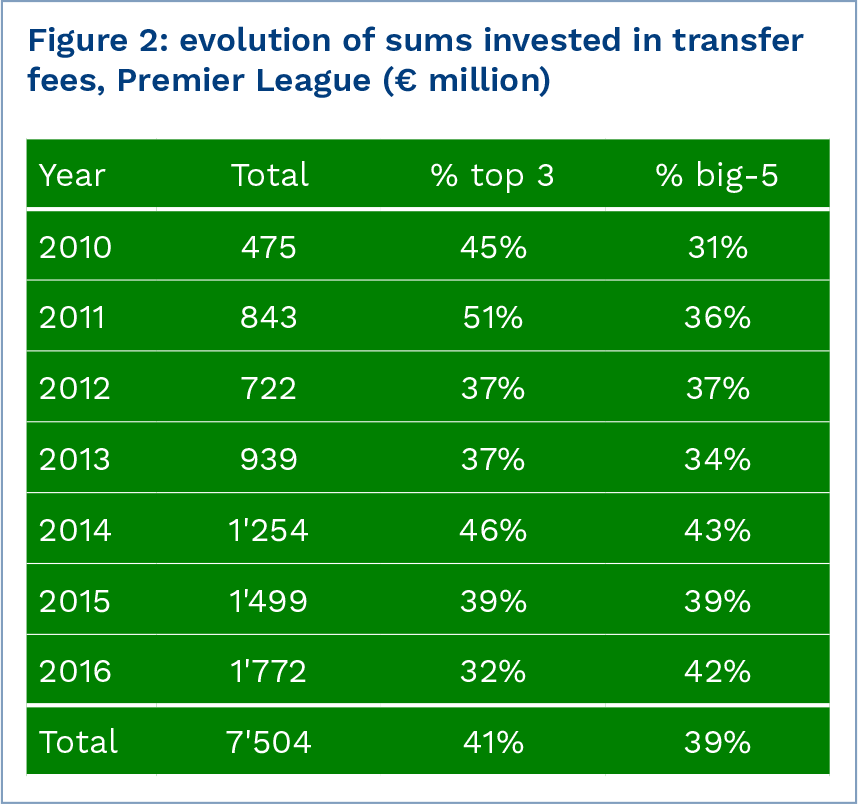
Italy’s top division clubs have invested the second highest amount for the signing of new players between 2010 and 2016: €4.3 billion. However, the progressive drop in the proportion of the expenditure of Serie A clubs with regard to the total big-5 league spending shows the decline of Italian football on an international level. The investments by Serie A teams accounted for 26.5% of the total in 2010 compared to 20.4% in 2016.
The strong recent increase of the proportion of investments by the three top spending clubs reflects the split between Juventus and the other teams of the peninsula, notably the two Milanese teams. At the moment, it is too early to say if the buyout of the latter clubs by Asian investors will result in any major change in the near future.
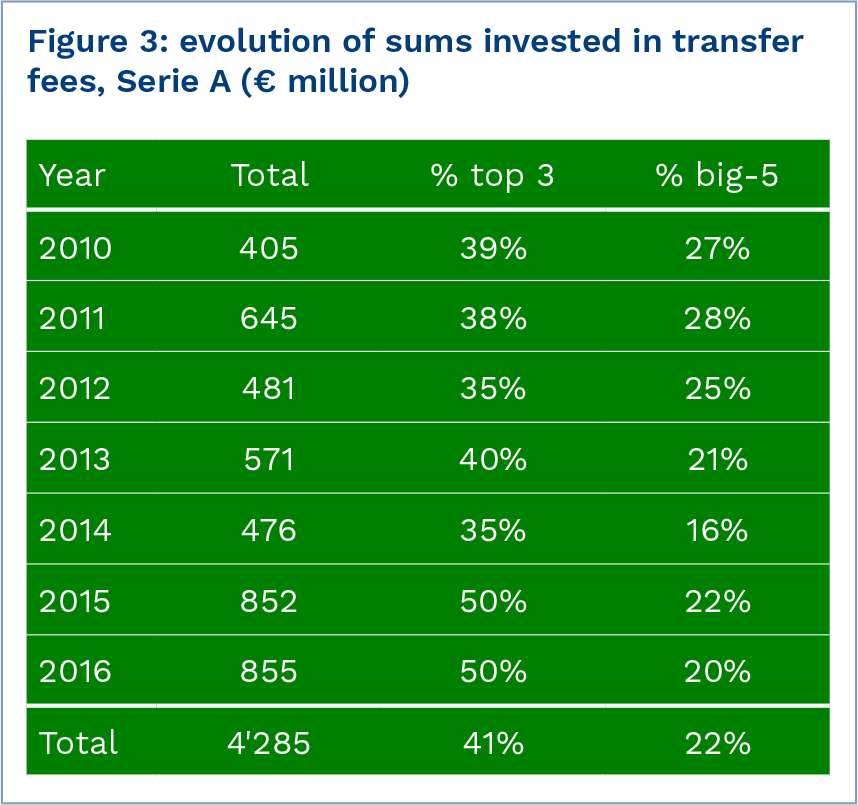
The amounts paid in transfer fees by clubs of the Spanish Liga have also risen between 2010 and 2016. The level of increase in both relative and absolute terms remains, however, less marked than in England or Germany. Despite this, Spanish teams regularly obtain top level results in the European Cup competitions.
The very high percentages in the level of spending of the three clubs having invested the most for each period taken into account is reflection of the economic dominance of Real Madrid, Barcelona and, to a lesser extent, Atlético Madrid. The more equitable sharing of television rights put into place for the 2016/17 season will contribute towards a more even playing field. The impact was already visible in 2016.
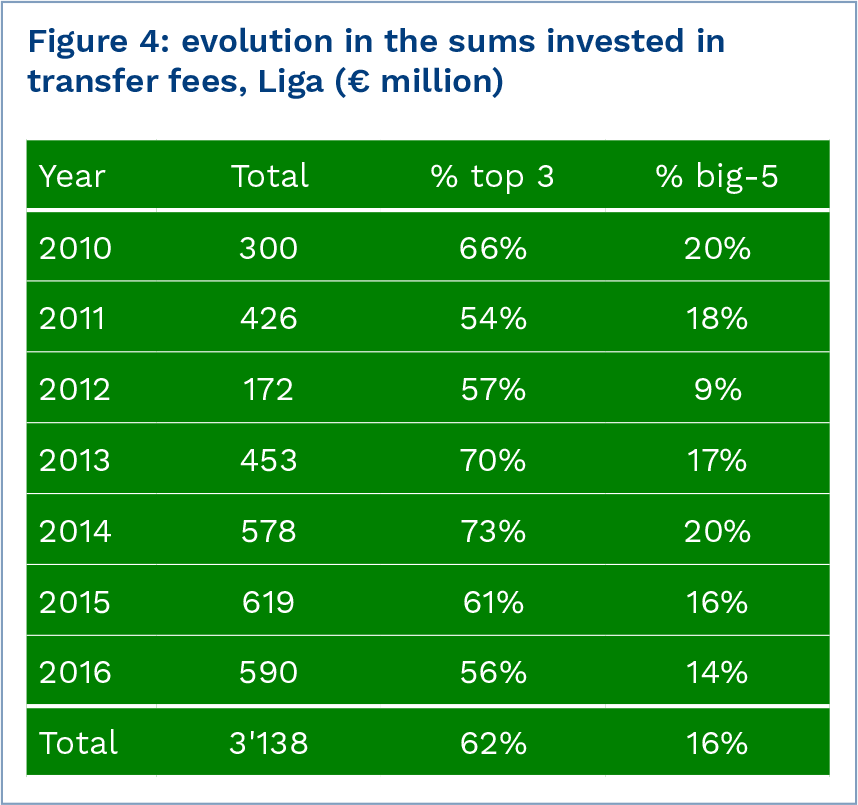
A strong increase in investments on the transfer market was also recorded in Germany. The level measured in 2016 was four times greater than that observed in 2010: €698 million compared to €176 million. This indicates the robust economic health of the Bundesliga’s teams. There is no doubt that these figures will continue to rise over the next few years.
The proportion of investments by Bundesliga clubs in comparison with the big-5 league total has also increased strongly since 2010: from 11.6 to 16.6%. Nevertheless, even in 2016, the average fees paid per German club was lower than that observed in a championship that is much less financially solid such as the Italian Serie A. This highlights a less speculative approach to the transfer market.
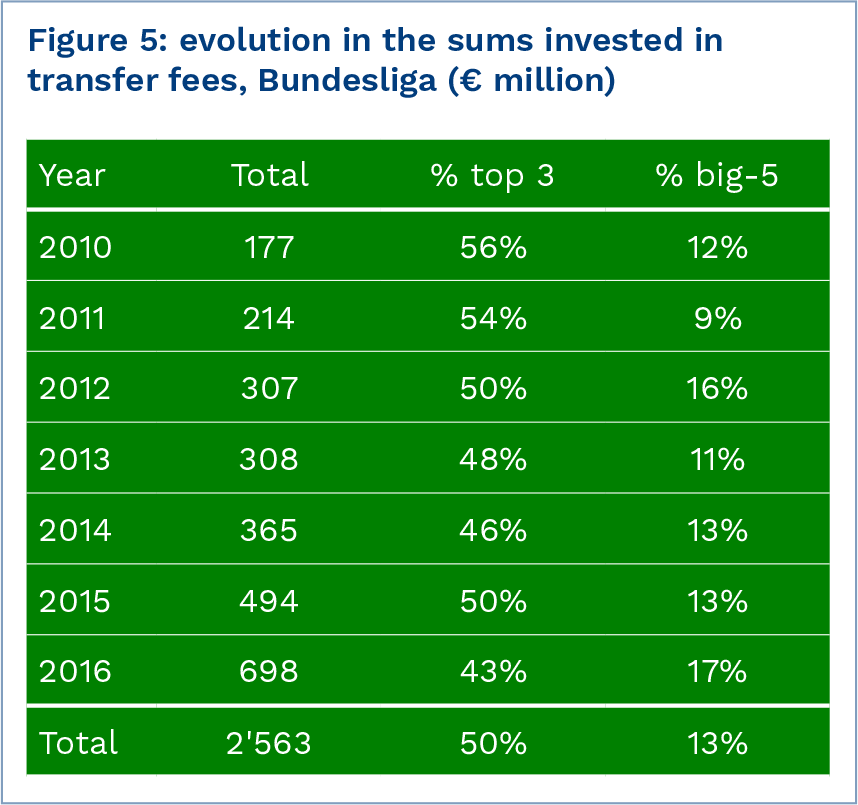
The increase in transfer fee expenditure observed in France since 2010 is principally linked to the means invested by Paris St-Germain since the club was purchased by Qatari investors in 2011. PSG’s domination is also visible through the very high proportion of the top three spending clubs in the total investments of French teams: on average 66.4% between 2010 and 2016.
Over the seven year period studied, French clubs have only made up 10.1% of spending on the transfer market for big-5 league clubs. This state of affairs is a reflection of the lowly status of Ligue 1 within the context of the major championships. With the exception of Paris St-Germain, Ligue 1 clubs essentially play a stepping stone role for young talents. This situation will certainly continue in the short term.
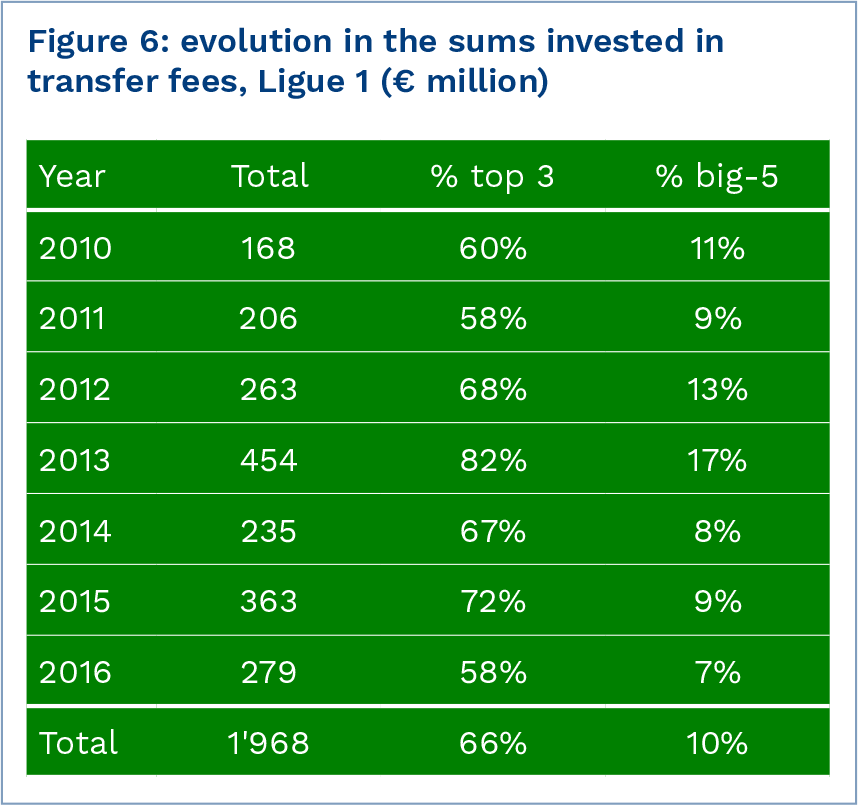
Three English teams top the rankings for clubs having spent the most between 2010 and 2016. Manchester City pips Manchester United and Chelsea for the top spot. Teams from the top twenty tend to monopolise the best rankings within their leagues, as well as the places in the last stages of the UEFA Champions League.
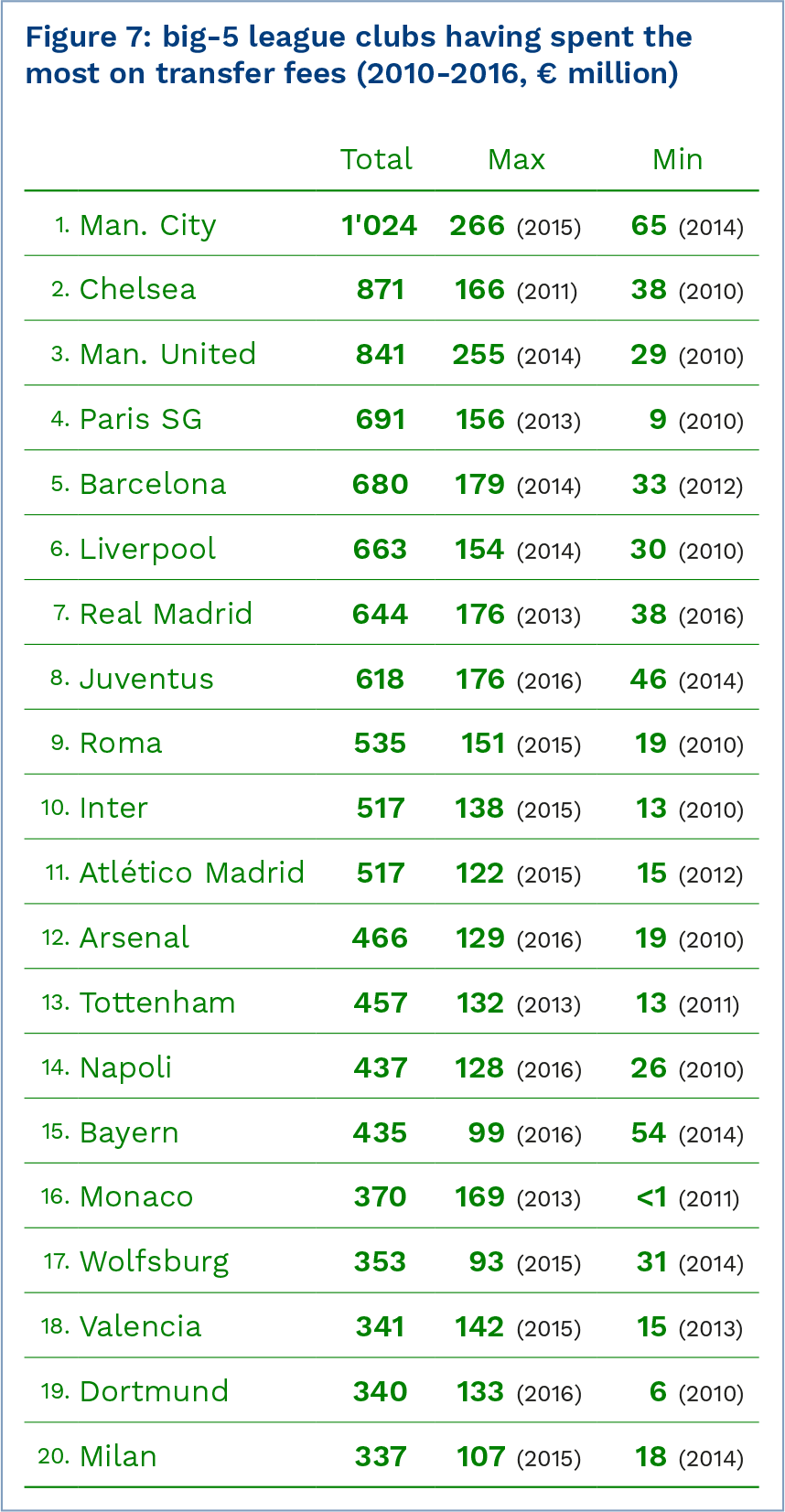
Six English teams are among the 20 clubs having invested the most on the transfer market since 2010. With the increasing dominance of the Premier League, this over-representation tends to reinforce itself. In 2016, 11 teams from the Premiership are among the 20 big-5 league teams having spent the most on recruiting new players.
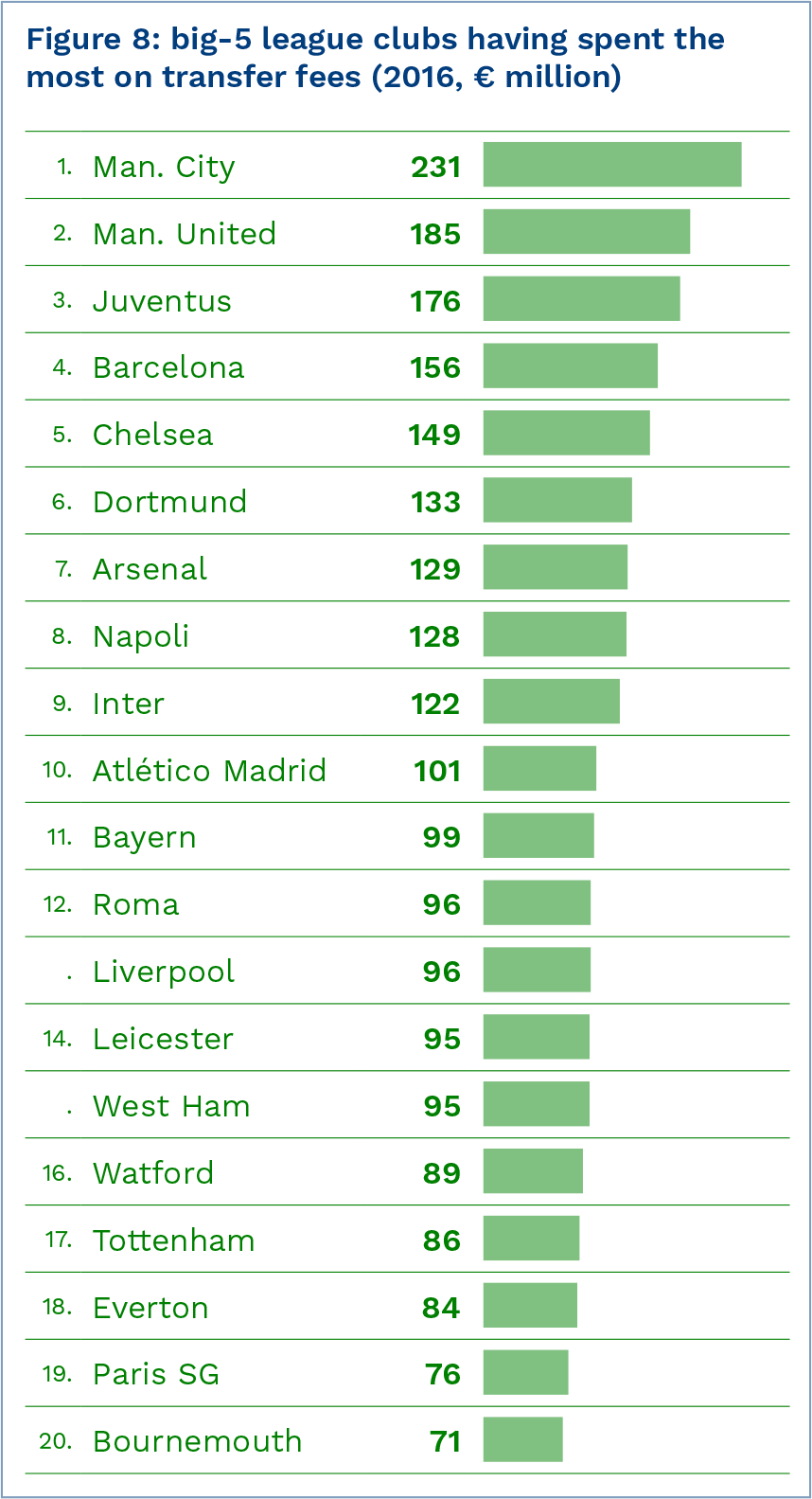
3. The beneficiaries of transfer fees
Another interesting angle of approach from which to understand the financial flows linked to the transfer market consists of studying the beneficiaries of investments made by big-5 league clubs. Though the transfer fee system was introduced over a hundred years ago, and reformed in 2001, notably to reward the work carried out by training clubs, the analysis of the beneficiaries of sums invested by big-5 league clubs show that its redistributive power could be enhanced*.
[*Monthly Report n° 3 of the CIES Football Observatory presents a proposal to improve income redistribution through the transfer system.]
Between 2010 and 2016, roughly two thirds of the sums invested by big-5 league clubs were paid out to other teams taking part in the five major European championships. Out of the €19.5 billion spent by big-5 league clubs over the seven years analysed, €12.9 billion benefited teams from the same competitions.
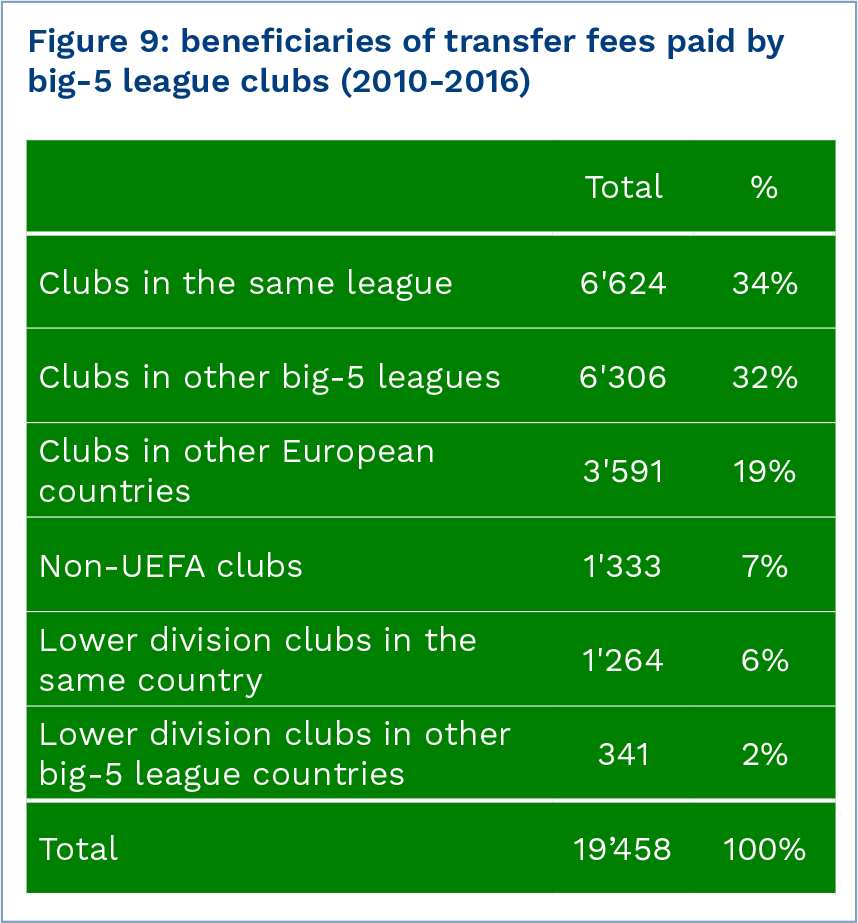
While clubs having invested the most in transfer fees are logically among the richest, the majority of teams having received the most money are also part of the closed circle of financially dominant clubs. For example, Real Madrid is 7th for transfer expenditure and 9th for transfer incomes.
Like Real Madrid, most teams in the top twenty of the rankings of clubs who earned the most income from the transfer of players to big-5 league teams are also in the top twenty of clubs that spent the most. For teams of countries hosting the five major European championships, Sevilla, Udinese, Southampton and Genoa constitute the only exceptions.
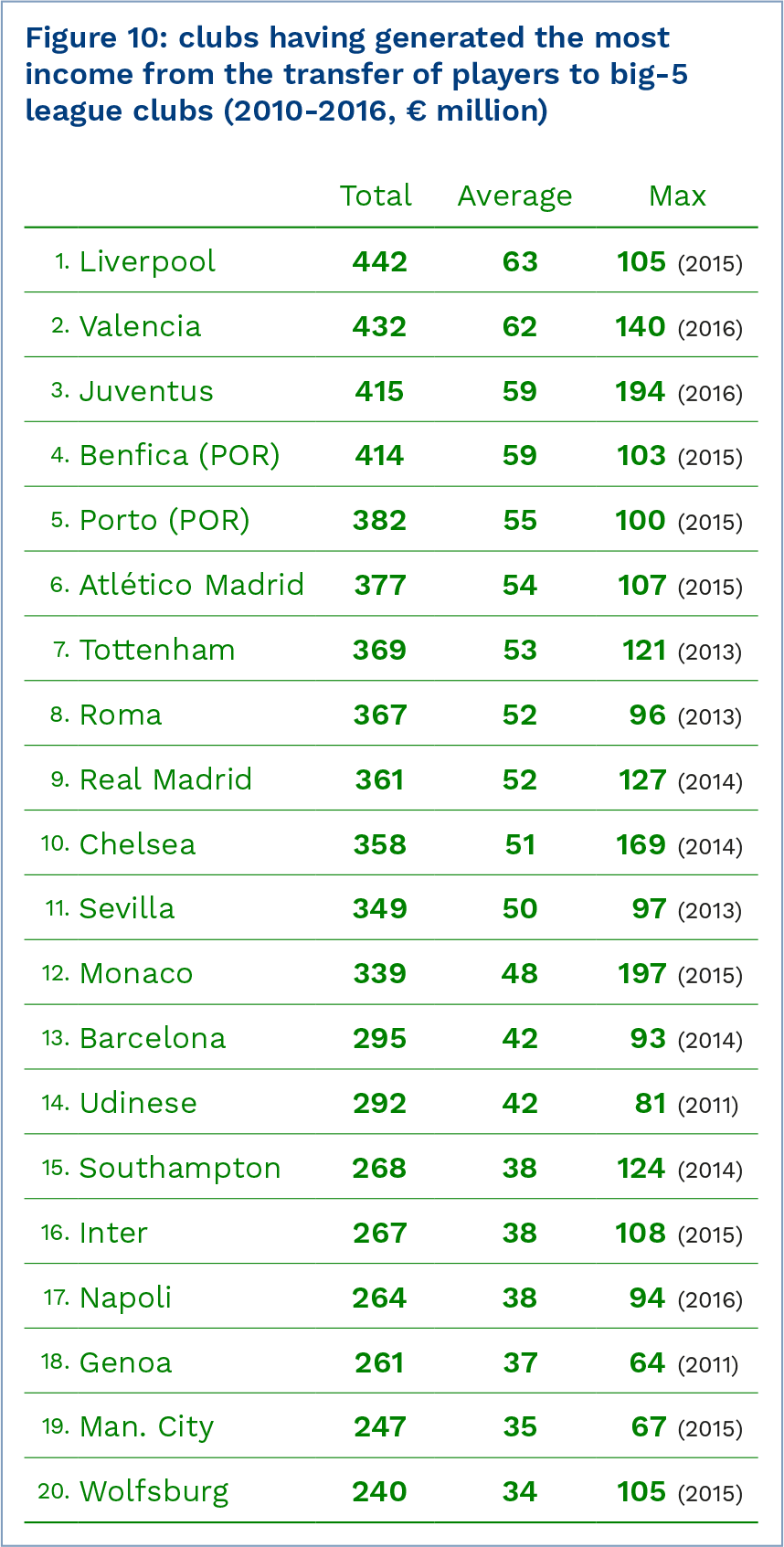
There are only two clubs situated outside the big-5 league countries in the top twenty places of teams having most benefited from big-5 club spending: Benfica (4th) and Porto (5th). The exceptional capacity of these Portuguese clubs to generate incomes on the transfer market is linked to their prestige and competitiveness, but also to strategic alliances woven with key intermediaries and investors both in Europe and South America.
Generally speaking, our analysis shows that to be able to generate considerable profits on the transfer market, it is necessary to have sufficient economic clout and prestige to attract the best talents either young or adult. In the current state of play, clubs without the necessary economic muscle have little chance of earning considerable incomes. A good access to dominant transfer networks is also of crucial importance.
Monthly Report n°17 - June 2016 - Transfer fees